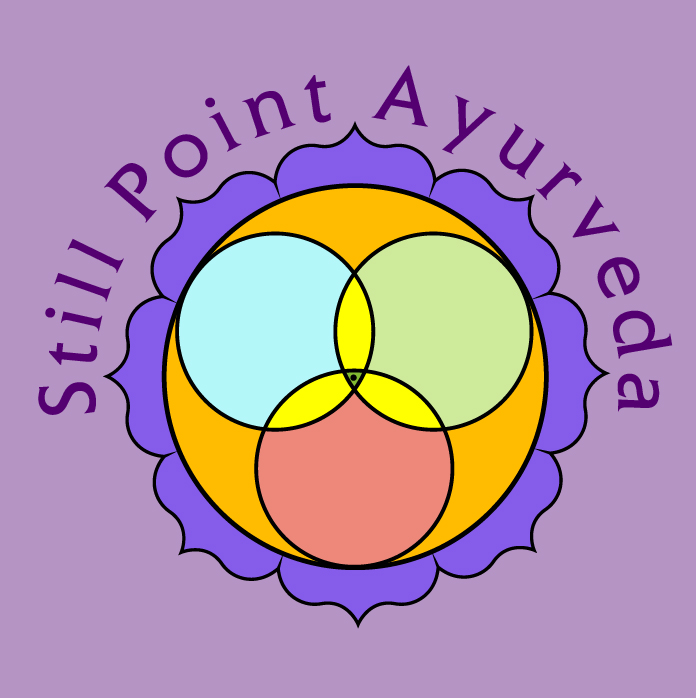DAILY SELF-ABHYANGA
/Abhyanga (abhy-external movements, anga-limbs=movements of oil around the outer parts of the body) is an essential component in Ayurvedic clinical care and healthcare management.
Self-abhyanga is part of dinacarya practices (daily routines) that self-abhyanga and, in general, daily routines provide an essential foundation for health and well-being.
According to Caraka, abhyanga especially in a therapeutic setting and full session has significant health implications and a great impact on the body-mind-spirit. As a tree branch that is dry cracks and breaks when trying to bend it, applying oil to it will help it to bend without breaking. Abhyanga, is a way of strengthening immunity, slowing down the aging process, reducing/removing stress, strengthening the bones, beautifying the skin, and supporting health overall.
Vagbhata, in Ashtanga Hrdaya of chapter 2 on Dinacarya practices, sloka 8-9, refers to the importance and necessity of abhyanga. It is indicated in the management of Vata, nourishing the body, long life, good sleep, good and strong healthy skin/immunity, and warding off old age, exercise (which increases Vata by design), but should generally be avoided by individuals with Kapha aggravation, weak Agni, and indigestion.
Abhyanga is a process of self-loving and affection. Abhyanga is done with snehan which means oiling, lubrication but also means love. In the process of self-abhyanga, you are spreading this love and awareness to all the parts of your body for the purpose of nourishing and coordinating the parts of the body, along with integrating all of you as it all ties into the hrdaya (heart.) Getting abhyanga done as a full session, invites you to receive, and the giver to give, creating an interdependent and delightful experience for all to be had.
Self-abhyanga is a daily simple practice that doesn’t have to be too lengthy. Of course, if the time and resources are there then why not but for practical purposes there is a shortened version that is like microdosing with abhyanga to still get some benefits even if not the highest potential benefits available. I had learned this shorter way through Dr. John Douillard almost 20 years ago as his way of doing it still made the practice practical and available for daily modern living. I wasn’t able to find the resource any longer but remembered and have provided similar suggestions to countless patients of mine.
INSTRUCTION/HOW TO?
Have chosen oil in a plastic bottle ready in the shower.
Turning on the shower, make sure the hot/warm water is on and hits your body from head to toe.
Step away from the shower part to the end of the tub and begin applying the oil.
In applying the oil, in most cases, you will be going from head to toe (unless otherwise specified). You will begin with the top of the head and apply oil. Then apply to the face in circular motions following the natural directions of the face, covering the entire surface, even getting the ears, above the mouth, around the nose, and eye orbits (try not to get any in the eyes.) Working your way to the shoulders, begin to apply more oil in a circular clockwise motion around the shoulder, then down the arm with long circular strokes, to the elbows with circles, down to the wrists, and around each finger ending at each tip. Next, cover the chest with both hands in a clockwise (Right hand) and counterclockwise (Left hand) down the center of the chest and then around the abdomen. Next, try to reach around the back and cover the parts missed in a similar fashion. Arriving at the groin, applying oil fully here, then to the glut muscles, fully. Proceed down the thighs, with long circular motions, and small circles around the knees, progressing down the calves with long circular motions, then ankles with short circles, all the way to the feet covering the feet and working your way out to the toes similar to the hands.
Then, take a washcloth and moisten it, if you use (organic/natural soap) a bar of soap, with one smear apply it to the washcloth; if you use body wash, one or two pumps of this liquid applied to the washcloth, and begin with ONE wiping from head to toe. You don’t need much soap.
Rinse out the washcloth, and then rinse the body.
Pat dry the skin and you’re all done!
Note: what oil to use depends on various factors and I have individualized such details with each client I have instructed on this practice. The right oil for the right person also makes a huge difference.
RESOURCES
ARTICLE OF ABHYANGA AND HEALTH
SANSKRIT REFERENCE ASHTANGA HRDAYA DINACARYA
DISCLAIMER: This information is meant for educational purposes only. Any changes in lifestyle should be reviewed with a qualified practitioner and primary care physician if you are currently under their care for specific conditions.

